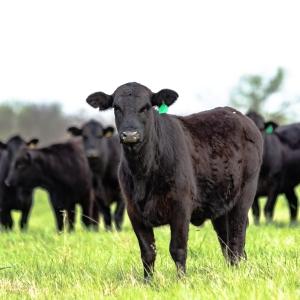Strategies for improved rebreeding in first-calf heifers
I think we can all agree that an open first-calf heifer is a costly “uh-oh” for our bottom line. Getting that heifer to calve the first time by her second birthday can be tough and expensive. After that, it would seem the hard work is done, but not so fast. We now have a first-time mother that needs to feed a baby, feed herself while she is continuing to grow, and then get herself back into reproductive fitness for re-breeding to calve again on schedule next year.
First-calf heifers that don’t breed back are very costly. Depending on what research you look at, along with input costs and calf prices, it is not out of the realm of possibilities that it could require 6 to 8 years for a cow to start making a profit. This points to the importance of doing what is possible to get them pregnant, so they calve early with their second calf. There are many ways to help keep these vulnerable females in your herd and enable them to become a solid battery of future brood cows.
Keep an eye on body condition
Body condition is of the utmost importance for heifers as they enter their last trimester and approach calving. Managing and maintaining condition is easier when heifers are separated from older cows. Doing so allows producers to provide extra energy to thin heifers and helps to eliminate the older cows’ advantage when competing for feed. Ideally, heifers will achieve a body condition score (BCS) of 6, on a 1 to 9 scale, and weigh from 80 to 85% of mature weight prior to calving. Too much flesh can cause problems such as calving difficulty and lower conception rates. A BCS of 6 will give heifers a condition buffer, so when they are in peak lactation and still growing, there is insurance against losing too much body condition before being rebred. Factors such as colder temperatures, mud and lower-quality forages, coupled with the heifer’s relatively higher energy requirement, can make it nearly impossible to add condition during the third trimester and lactation. Providing wind breaks and dry bedding areas not only helps to conserve energy, but also provides health advantages.
Don’t underestimate postpartum interval importance
Many producers will prepare their replacement heifers to calve ahead of the mature cows. This strategy provides first-calf heifers with a longer postpartum interval (PPI) to heal up and begin cycling by the time breeding starts for the main cow herd. It also allows producers to devote the front-end of the calving season to these more inexperienced first-time mothers. Another management practice that will help to increase PPI is to synchronize replacement females as yearlings prior to their first conception and/or manage to have a short 30- to 45-day breeding season.
Incorporating calving-ease, low birthweight genetics and adequate nutrition will reduce the incidence of dystocia. Heifers that have zero problems with dystocia will have a shorter PPI than heifers that experienced difficult births. It stands to reason that a long struggle and/or a hard pull will make it harder for a heifer to catch up and be rebred on schedule with her herd mates.
Make sure you’re meeting dietary requirements
Calving dates and bull selection have been set for this year, but we can still strive to maintain BCS, or better yet, shift heifers to a positive energy balance ahead of breeding. A first-calf heifer at peak lactation is going to require at least 62 to 63% total digestible nutrients (TDN), or 63 to 65 Mcal/cwt net energy for maintenance (NEm), and around 11% crude protein (CP) in her diet depending on milk production and body size. If she needs to gain weight before breeding, she will need at least an additional 2 to 3% TDN (2 to 3 Mcal/cwt NEm) and a ration closer to 12% CP.
When dietary energy is below requirements for maintenance, lactation and gain, heifers are unable to consume enough dry matter to meet their needs. Nutrient-dense feedstuffs are important to include in the ration. It is imperative to test all feeds for nutrient contents and optimize use of resources and supplementation to efficiently target the heifer’s needs. Hubbard Feeds offers a variety of protein and/or energy products in a wide range of forms including meals, pellets, cake cubes, pressed blocks and CRYSTALYX® barrels.
Don’t forget minerals and vitamins
Trace minerals and vitamins are essential to making sure heifers produce both a healthy, thrifty calf and good-quality colostrum. She needs to have the raw materials available to her to continue to grow while repairing herself reproductively ahead of conception. The key to successful supplementation is starting early. A solid year-round supplementation strategy is the cornerstone to producing results during calving time, and it is critical 60 days prior to calving. Keep in mind that high-quality organic trace minerals are more easily absorbed and used by the animal to help deal with antagonists and trace mineral deficiencies. Hubbard Feeds’ Blueprint® line of products is a great tool to address these issues. One of the many benefits of Blueprint supplements is that they contain only Bioplex® organic trace minerals as the source of copper, zinc, manganese and cobalt, along with Sel-Plex® as a source of organic selenium.
The investment has already been made in getting the bred heifers to calving time. It is good stewardship and a sound business decision to supply her with the tools needed to stay out of the cull pen. Now is the time to focus on nutrition and management to help make your investment continue to pay dividends for years to come. Contact your nearest Hubbard Feeds dealer for assistance in formulating a feeding program to optimize your success in getting your first-calf heifers rebred and on their way to being productive mature cows.








